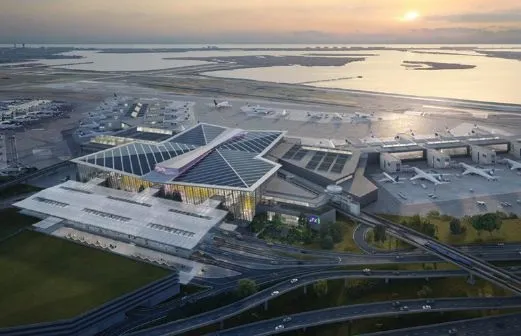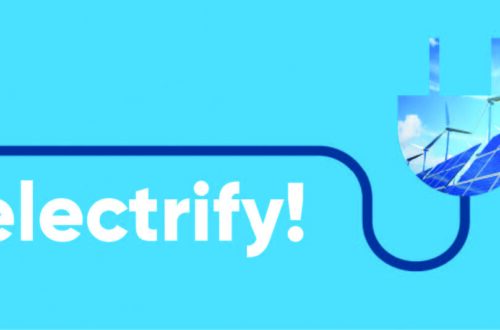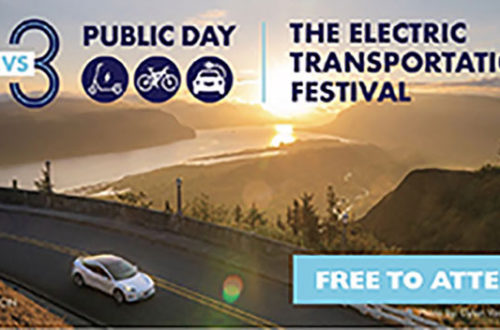Bill Mollison, of permaculture fame, made a rather profound observation: “Though the problems of the world are increasingly complex, the solutions remain embarrassingly simple.”
Applying his words to the problem of climate change, climate scientists and millions of concerned individuals agree that the solution is simple: stop burning fossil fuels and switch everything to electric power. A simple solution but a massive global undertaking to make it happen.
It is happening and so we bring you a few items that caught our attention in the months since our Spring issue.
JFK Airport To Go Solar

The largest rooftop solar array in New York City and on any U.S. airport terminal will illuminate John F. Kennedy International Airport’s future New Terminal One in just a few years, the firms behind the project announced on Thursday. AlphaStruxure — a joint venture of global investment firm Carlyle and Schneider Electric — will design, construct, and operate the New Terminal One (NTO) microgrid.
The massive photovoltaic system — of more than 13,000 solar panels — will help power an independent microgrid poised to transform the terminal “into the first fully resilient airport transit hub in the New York region,” according to the companies behind the project.
The partners stated that the electricity generated by the 11.3-megawatt microgrid will be enough to power 3,570 average U.S. homes for one year.
For more info: bit.ly/3V2pgH0

In June 2019, the City of Ithaca (NY) made the ambitious commitment to decarbonize the entire City by 2030 with a focus on equity and justice. In pursuit of that goal, the City created a first-of-its-kind collaboration with electrification partners BlocPower, who serves as the Program Manager, and Alturus, who shares the vision and goals for the community. The partnership brings clean, comfortable, fully electric buildings within reach for all residents and allows Ithaca to slash greenhouse gas emissions that cause global warming and threaten life on Earth.
The flagship Electrify Ithaca program is available to everyone who owns, operates, or occupies a home or building in the City of Ithaca and brings competitive financing that leverages bulk buying of equipment, State incentives, and low-interest rates to make decarbonization affordable and accessible. Paired with the social and economic justice goals of the Ithaca Green New Deal, the program prioritizes Climate Justice Communities in the queue for electrification and in populating the green jobs pipeline, the comprehensive workforce development program that will support Electrify Ithaca.
For more info: sustainic.wixsite.com/my-site
Heat Pump Sales Are Up

Americans bought more heat pumps than gas furnaces last year.
U.S. annual sales rose above 4 million units for the first time in 2022, outpacing sales of gas-powered furnaces.
Heat pumps run on electricity instead of fossil gas and are up to three times more efficient than gas furnaces for heating. Plus, they can also act as air conditioners when the weather is warm, serving as a double-duty appliance.
Their adoption has been increasing across the country over the past 10 years. . Now there are new federal incentives for heat pumps from the Inflation Reduction Act — tax credits for certain models are available to all households, plus rebates of up to $8,000 for lower-income homeowners.
For more info: bit.ly/3Mu14uM
7-Eleven Rolls Out

7‑Eleven, Inc. is rolling out 7Charge, its new, proprietary EV charging network and app that delivers a convenient and reliable fast-charging experience at select 7‑Eleven® stores in the U.S. and coming soon to Canada. 7‑Eleven intends to build one of the largest and most compatible electric vehicle (EV) fast-charging networks of any retailer in North America with the launch of 7Charge, which is already delivering fast-charging services to customers in several locations in Florida, Texas, Colorado, and California.
For more info: www.7-eleven.com/7charge
Lowe’s is Going Solar

In line with its goal to reach net-zero greenhouse gas emissions by 2050, Lowe’s has released details of rooftop solar panel installations at 174 store and distribution center locations nationwide. Once each site is completed, the solar panels will provide approximately 90% of the energy usage at each location
The rooftop solar portfolio of 174 locations includes:
• 20 stores in New Jersey that are currently operational through Infiniti Energy. Panel installations at six additional Lowe’s stores in the state are in development and scheduled to be operational later this year.
• 55 stores in California as well as 36 stores and three distribution centers in Illinois planned in partnership with DSD. Construction is expected to begin at all sites by the end of 2023.
• 52 stores and two distribution centers in California, in partnership with Greenskies Clean Focus, scheduled to begin construction later this year.
This investment in rooftop solar panels builds on Lowe’s recent sustainability progress, including achieving its 2025 goal of reducing scope 1 and scope 2 greenhouse gas emissions by 40% – relative to 2016 emissions levels – four years early.
Top 10 Metro Areas for Electric Vehicle Adoption
As the electric race heats up, some places are better than others in fostering electric vehicle adoption. StorageCafe analyzed the largest metropolitan areas in the country with a population of over 500K (113 metro areas) to see which cities offer optimal conditions for EV uptake.
They ranked them against a series of metrics, including the number of EVs, public chargers, price of electricity (expressed as an eGallon), a dedicated highway system (HOV and HOT lanes), condition of roads, clean energy, EV insurance costs, and local incentives. Additionally, as EV drivers tend to be multicar owners, they also considered local self-storage provision, as this can help with parking and garage space optimization.
According to Storage Cafe’s research, the West dominates the list of the best places for electric cars. In line with their broader sustainability and smart-growth goals, western hubs have amplified efforts toward expanding and improving the infrastructure and market conditions to support EV uptake at a larger scale. As a result, Seattle is ranked number one, San Francisco is number two, San Jose is third, and Portland is fourth for creating a favorable context for people to embrace electric driving.
For more info: bit.ly/3ZTKK9V
Land Needed to Decarbonize the Power Sector

Critics of wind and solar routinely raise concerns about how much land would be required to decarbonize the US power sector. Fortunately, the answer is relatively little, according to the National Renewable Energy Laboratory (NREL). Their recent study shows that it would take less than 1 percent of the land in the Lower 48 — that’s an area comparable to or even smaller than the fossil fuel industry’s current footprint. And when wind and solar projects are responsibly sited, the environmental and public health impacts would be far less harmful than those from extracting, producing, and burning fossil fuels.
For more info: bit.ly/3zGhQiZ

The May newsletter from the Electric Vehicle Association reports that demand for electric vehicles (EV) is strong in the U.S. In January 2023, EV market share jumped to 10% of all car sales for the U.S. market. And a new 2022 survey from Consumer Reports shows that 30% of all licensed drivers in the market to buy or lease a new vehicle were not even considering a conventional gas vehicle. That’s big news for EV supporters and clean air advocates, but zooming out shows that automakers are not meeting this demand for electric vehicles.
“Consumers can’t buy EVs that don’t exist, but that doesn’t mean they’ll buy a new conventional gasoline vehicle instead,” says Chris Harto, Senior Policy Analyst, at Consumer Reports. “It’s called the Osborne Effect: consumers will hold off on purchasing a soon-to-be obsolete item and wait for a newer, better version. Automakers could end up with lots full of conventional gasoline cars and no buyers for them.”
“It’s time for regulators and automakers to hit the accelerator on electric vehicle production,” said Chris Harto, senior energy policy analyst at CR. “Right now, even under the most aggressive announced plans to ramp up production, EV demand will not be satisfied for consumers who say they would definitely buy or lease one today until 2030.”
For more info: www.myeva.org






